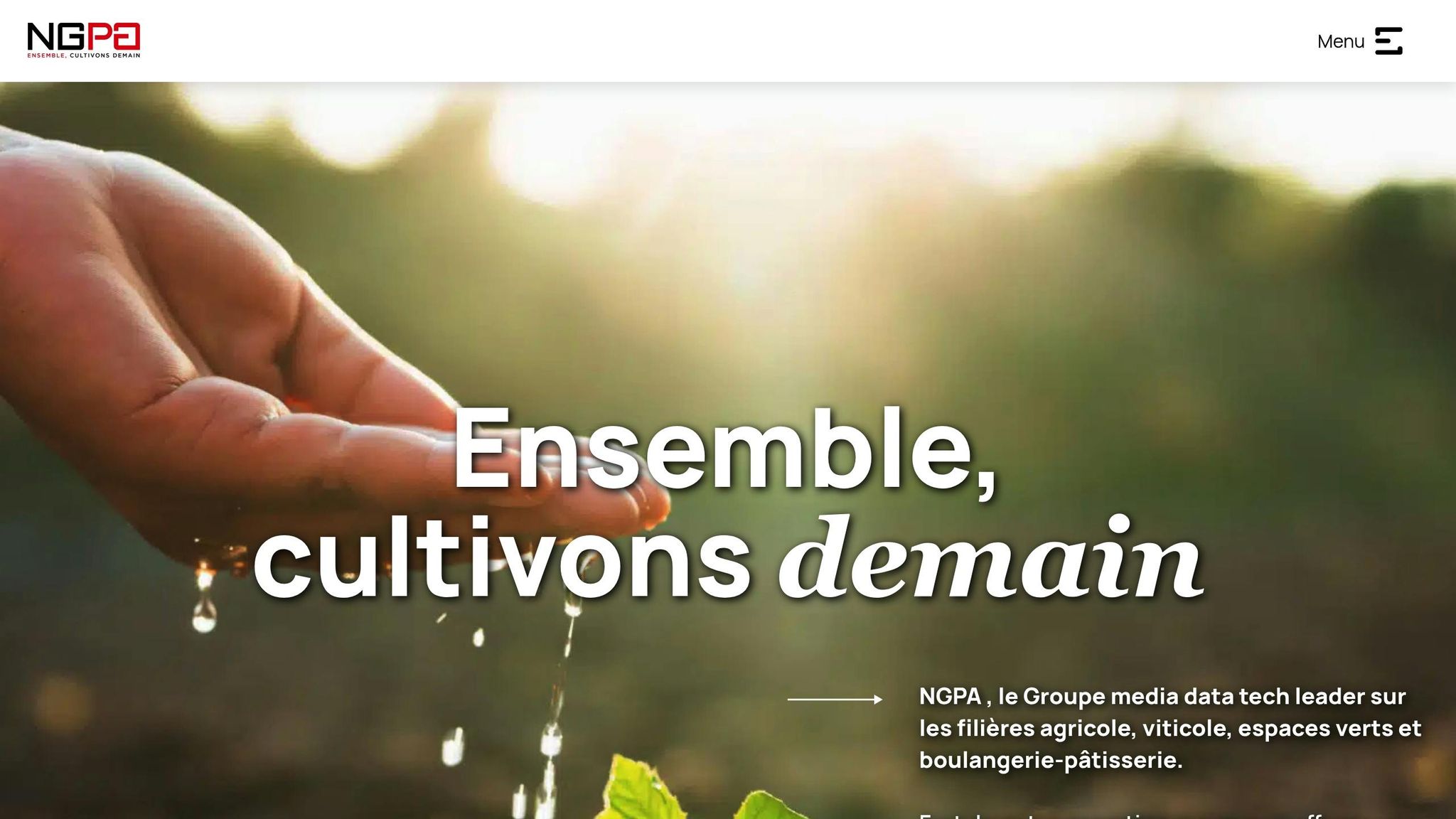
The fatal mistake of CMOs: confusing traffic and qualified revenues
The fatal mistake of CMOs: confusing traffic and qualified revenues
Marketing directors (CMOs) often make a mistake by measuring their success solely based on web traffic volume. However, a large number of visitors does not guarantee financial results. In Switzerland, where regional and linguistic particularities complicate the landscape, it is essential to focus on qualified prospects, meaning visitors with a real intention to purchase.
Key points to remember:
- Traffic ≠ Revenues: 10,000 unqualified visitors are worth less than 1,000 ready-to-buy prospects.
- : A qualified prospect explores the site more (key pages, forms) and has a high conversion potential.
- Swiss Specificities: Linguistic diversity (French, German, English) requires fine segmentation and tailored content.
To succeed, companies must align their marketing and sales efforts, use conversion-focused indicators, and optimize their . This change in mindset is essential to transform marketing into a revenue engine.
Interview with Thierry PHILIPPET, Director of Digital Revenues - NGPA Group

Traffic vs. qualified prospects: main differences explained
Confusing traffic volume and prospect quality is one of the costliest mistakes in . This distinction is crucial to move from frantic activity to a truly profitable strategy.
What is qualified traffic?
Qualified traffic includes visitors who match your ideal customer profile and demonstrate a real interest in your products or services. Unlike generic traffic, these visitors have a clear buying intent, align with your demographic criteria, and are much more likely to convert.
Let's take a Swiss example: a company based in Geneva might consider a French-speaking executive actively seeking a specific solution as a qualified prospect, using keywords like "digital marketing consultant Geneva." In contrast, a user using vague terms like "marketing" would be much less relevant.
To measure this qualification, several indicators are useful: the keywords used, engagement on the site (time spent, pages visited), and progress in the customer journey. A qualified visitor often explores multiple relevant pages, reads content carefully, and eventually visits pages like those dedicated to contacts or quote requests.
Why traffic metrics can be misleading
Now that we have defined qualified traffic, let's see why relying solely on traffic numbers can be misleading.
A high volume of visitors can give a sense of success while masking deep issues. For example, a site attracting 10,000 visitors per month with only 20 conversions is much less effective than a site receiving 1,000 visitors but generating 50 conversions[1]. These discrepancies often reveal two major flaws: either the target audience is poorly defined, or the message does not effectively communicate value.
Some metrics, like bounce rate, are often misinterpreted. A bounce rate of 70–85% may be acceptable for informative content, but a rate above 60% on a product page signals an issue[1].
Chief Marketing Officers (CMOs) sometimes fall into this trap, underestimating the importance of quality traffic. SEO is sometimes seen as a "black box"[3], and even technical details like a one-second delay in page loading can reduce conversions by 7 to 10%[1].
Prospect quality: a growth engine
To avoid the pitfalls of unqualified traffic, it is essential to focus on converting quality prospects.
Qualified prospects strengthen the sales pipeline and offer a higher return on investment. For example, leads from SEO show a conversion rate of 14.6%, compared to only 1.7% for outbound approaches[3]. This difference is due to a stronger buying intent among organic visitors, who convert up to 10 times better than those from social networks on desktop[3].
In Switzerland, where long-term relationships and trust are crucial, this qualitative approach is even more decisive. A qualified prospect, well supported, can generate recurring revenues over several years.
"High-intent demand must be earned, not captured. CMOs who prioritize quality conversations over lead lists will win larger contracts with shorter sales cycles."
- Laura J Bal, Digital Marketing & Martech Consultant [2]
By adopting this approach, marketing ceases to be seen as a cost center focused on volume and becomes a revenue engine, capable of generating concrete business opportunities. It's no wonder that 57% of B2B marketers state that SEO generates more leads than any other marketing initiative[3].
The risks of poor metrics in digital marketing
Relying on poorly chosen metrics can turn a promising strategy into a financial sinkhole. In Switzerland, where cultural and linguistic diversity further complicates the landscape, it is crucial to define performance indicators aligned with concrete objectives, such as conversion or revenues. Otherwise, the consequences can be severe: wasted budgets and disappointing returns on investment.
Misused marketing budgets and disappointing ROI
Generic keywords, despite attracting a large volume of visitors, often generate little engagement. Take the example of , estimated to reach CHF 3.2 billion by 2025[6]. In a country where over 60% of consumers now make their purchases online[6], it becomes essential to focus efforts on specific keywords related to a clear buying intent. This not only attracts more qualified prospects but also improves return on investment.
Challenges of bilingual and multicultural markets
Switzerland is a unique case with its four official languages and cultural diversity[6]. An effective strategy must integrate both German and French, which together cover 85% of the Swiss population[5]. Limiting to a single language, such as French, risks missing out on a significant portion of the market. Additionally, differences in regional behaviors must be considered: for example, German speakers click on ads less frequently than other groups[7]. Adapting both language and content formats to local preferences is essential to maximize impact and avoid targeting errors, which can harm the quality of customer interactions.
Consequences on sales and customer relationships
Poor alignment of metrics between marketing and sales teams can create tensions and harm overall performance. For example, generating a large number of leads without verifying their relevance for the sales department wastes time and can lead to a loss of trust between the two departments.
In Switzerland, where customer service expectations are particularly high, lead qualification becomes a crucial issue. Joe Delmont-Ferrara, President of JDF Executive Communication, emphasizes this point:
"Misunderstandings, awkward conversations, or confusing emails can negatively impact customer satisfaction. This can then lead to frustration, loss of business, and a poor reputation"[9].
These challenges become even more significant in a context where, in 2020, nearly 281 million people lived in a country different from where they were born[8]. In Switzerland, this cultural and linguistic diversity requires a marketing approach that prioritizes lead quality and relies on authentic relationships with each customer segment.
How to attract and convert qualified leads
After discussing the risks of a volume-focused strategy rather than quality, it's time to focus on concrete methods to turn these challenges into opportunities.
Audience segmentation for Swiss bilingual markets
The first essential step is to precisely segment your audience considering linguistic, geographical, and behavioral criteria. In Switzerland, this segmentation goes beyond a simple distinction between French and German.
Swiss French speakers are distinct from their French neighbors. For example, they use terms like "septante" instead of "soixante-dix" and prefer a more direct tone in communications. German speakers, representing about 65% of the population, often prefer detailed and technical content.
Don't forget English speakers, particularly prevalent in financial and technological sectors in Geneva. This international community, with strong purchasing power, often seeks high-end services and values impeccable customer service.
To go further, fine segmentation should rely on behavioral data analysis. This helps identify buying intentions and adapt approaches accordingly. Then, the should be personalized for each segment to maximize impact.
SEO and content for high-intent users
Adopt an approach that prioritizes language over location[10]. This approach is particularly suitable for Switzerland, where linguistic boundaries do not always align with cantonal limits.
SEO relies on three main pillars: technical optimization, page content, and external link building[4]. For each language, conduct a specific keyword research[4]. For example, search terms in French-speaking Switzerland may differ from those used in Swiss German-speaking regions, even for the same product or service.
Create separate pages for each language[4] instead of grouping multiple languages on one page. This improves both user experience and search engine indexing.
Localizing content goes beyond translation. It involves adapting to local references, date formats (31.12.2025), currencies (CHF 1,234.50), and regulations like GDPR-CH[4]. Simultaneously, develop local SEO by obtaining links from relevant Swiss sites[4]. These links enhance your credibility with search engines and increase visibility for geolocated searches.
Lastly, remember that SEO is only part of the equation. An optimized user experience is equally essential to convert visitors into customers.
UX/UI design for multilingual audiences
Creating a user experience tailored to multilingual audiences requires attention to technical and cultural details. The language selector should be easily accessible, ideally placed in the top corner of the page or in the main menu[11]. On mobile, it's best to integrate it into the hamburger menu for better ergonomics[11].
Display languages in their native form (e.g., "Deutsch" instead of "German") and offer users the ability to independently choose language, location, and currency[11][13]. This avoids making incorrect assumptions about their preferences.
Adapt interfaces to variations in text length based on the language[12]. For example, German often generates longer words than French, which can affect layout. Also, use images, icons, and colors that respect cultural sensitivities[12], and avoid embedding text in graphics to simplify translations